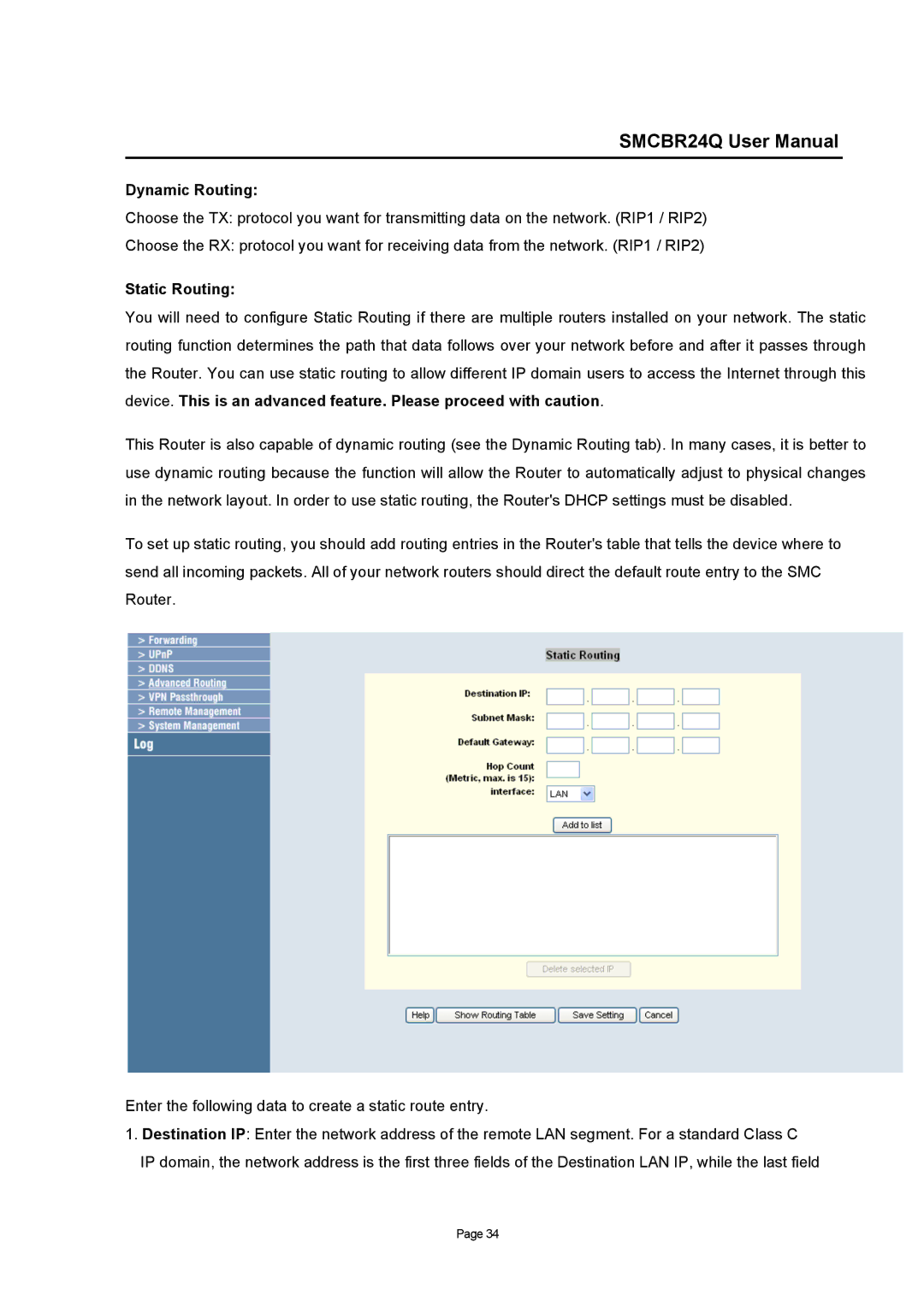
SMCBR24Q User Manual
Dynamic Routing:
Choose the TX: protocol you want for transmitting data on the network. (RIP1 / RIP2)
Choose the RX: protocol you want for receiving data from the network. (RIP1 / RIP2)
Static Routing:
You will need to configure Static Routing if there are multiple routers installed on your network. The static routing function determines the path that data follows over your network before and after it passes through the Router. You can use static routing to allow different IP domain users to access the Internet through this device. This is an advanced feature. Please proceed with caution.
This Router is also capable of dynamic routing (see the Dynamic Routing tab). In many cases, it is better to use dynamic routing because the function will allow the Router to automatically adjust to physical changes in the network layout. In order to use static routing, the Router's DHCP settings must be disabled.
To set up static routing, you should add routing entries in the Router's table that tells the device where to send all incoming packets. All of your network routers should direct the default route entry to the SMC Router.
Enter the following data to create a static route entry.
1.Destination IP: Enter the network address of the remote LAN segment. For a standard Class C IP domain, the network address is the first three fields of the Destination LAN IP, while the last field
Page 34
